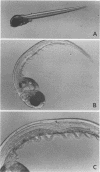Abstract
Shake flask studies examined the rate and extent of biodegradation of pentachlorophenol (PCP) and 42 components of coal-tar creosote present in contaminated groundwater recovered from the American Creosote Works Superfund site, Pensacola, Fla. The ability of indigenous soil microorganisms to remove these contaminants from aqueous solutions was determined by gas chromatographic analysis of organic extracts of biotreated groundwater. Changes in potential environmental and human health hazards associated with the biodegradation of this material were determined at intervals by Microtox assays and fish toxicity and teratogenicity tests. After 14 days of incubation at 30 degrees C, indigenous microorganisms effectively removed 100, 99, 94, 88, and 87% of measured phenolic and lower-molecular-weight polycyclic aromatic hydrocarbons (PAHs) and S-heterocyclic, N-heterocyclic, and O-heterocyclic constituents of creosote, respectively. However, only 53% of the higher-molecular-weight PAHs were degraded; PCP was not removed. Despite the removal of a majority of the organic contaminants through biotreatment, only a slight decrease in the toxicity and teratogenicity of biotreated groundwater was observed. Data suggest that toxicity and teratogenicity are associated with compounds difficult to treat biologically and that one may not necessarily rely on indigenous microorganisms to effectively remove these compounds in a reasonable time span; to this end, alternative or supplemental approaches may be necessary. Similar measures of the toxicity and teratogenicity of treated material may offer a simple, yet important, guide to bioremediation effectiveness.
Full text
PDF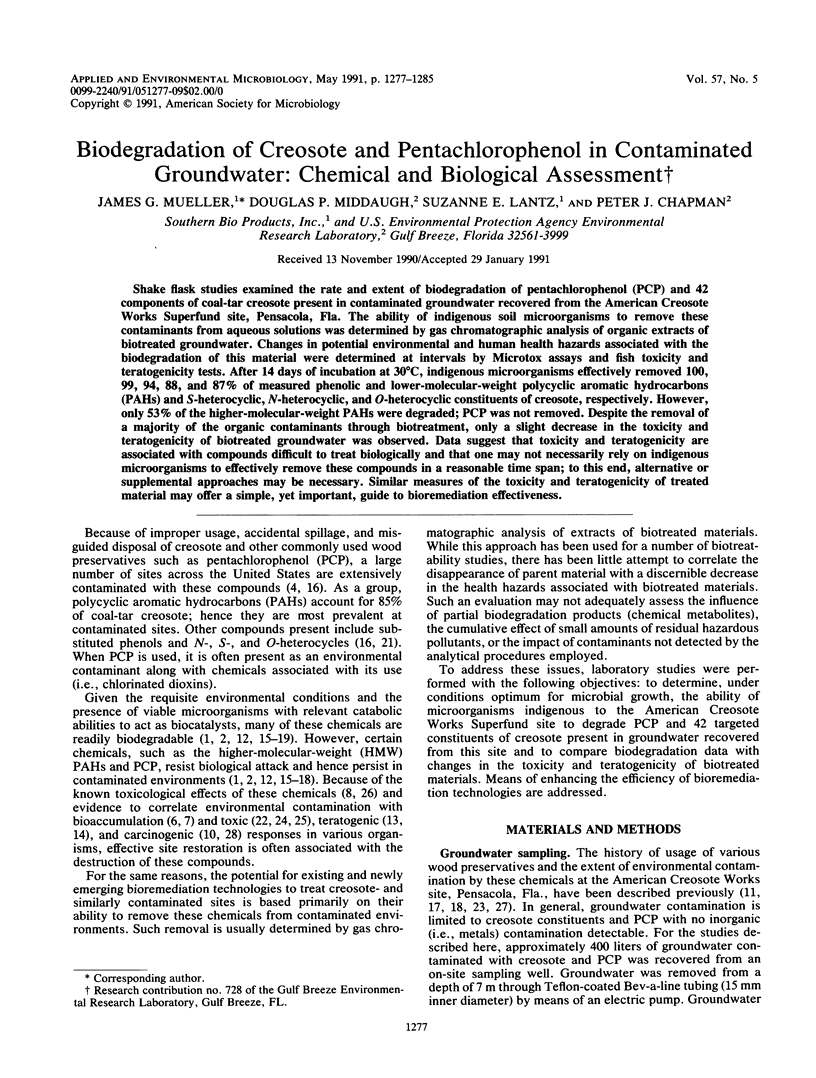
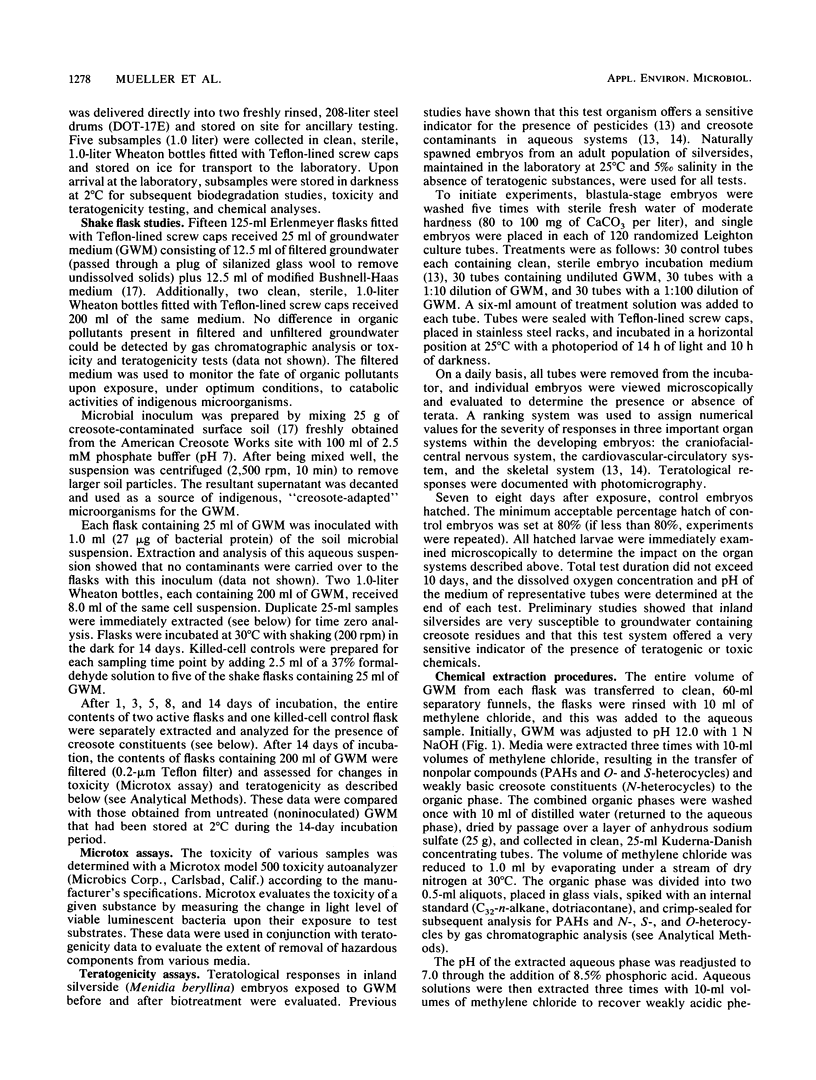
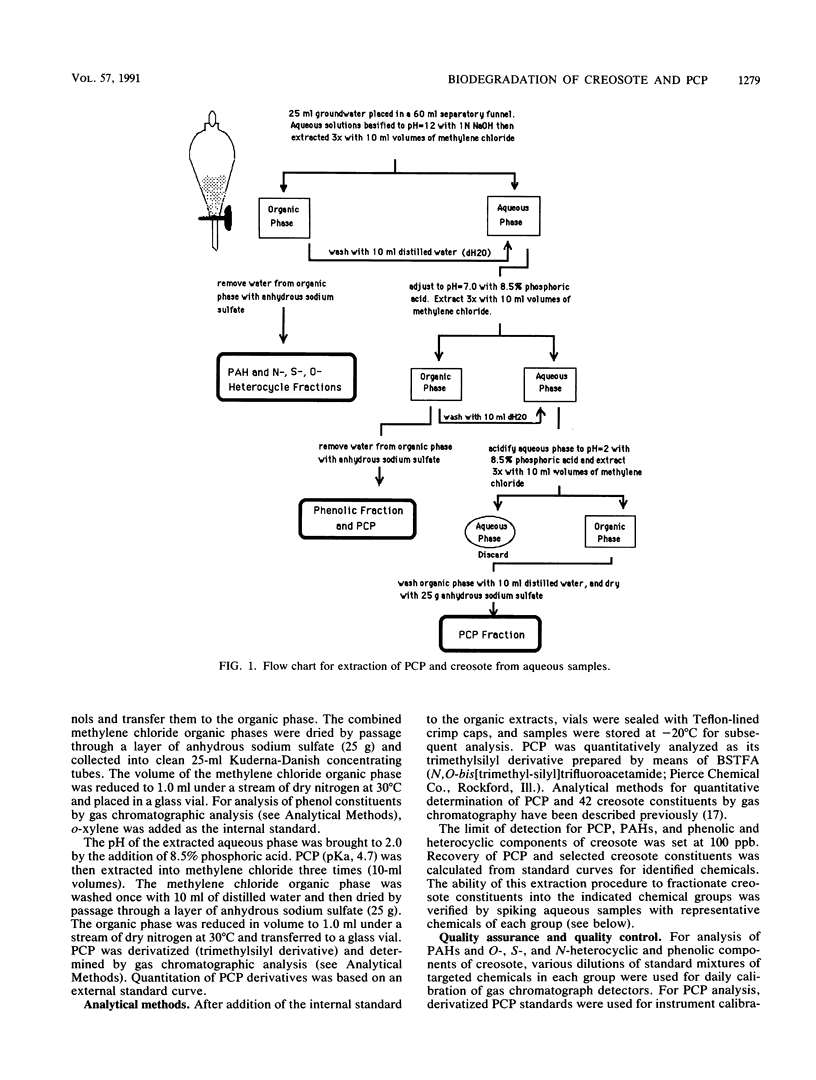
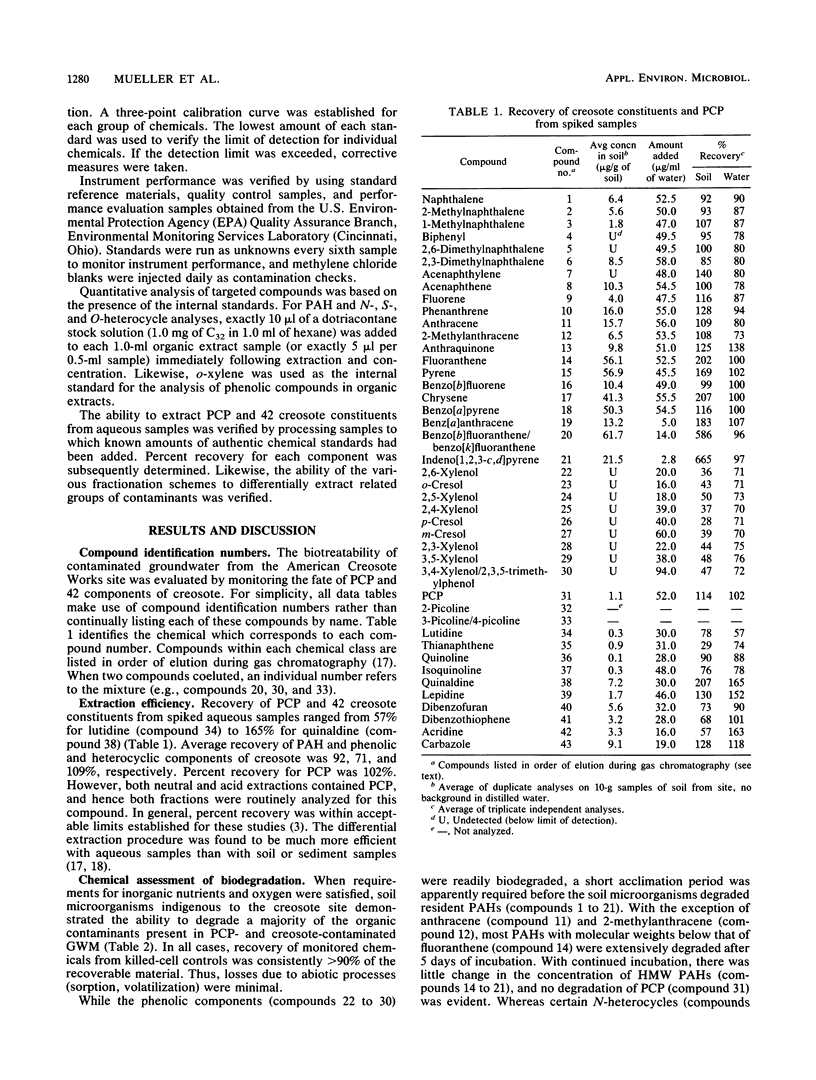
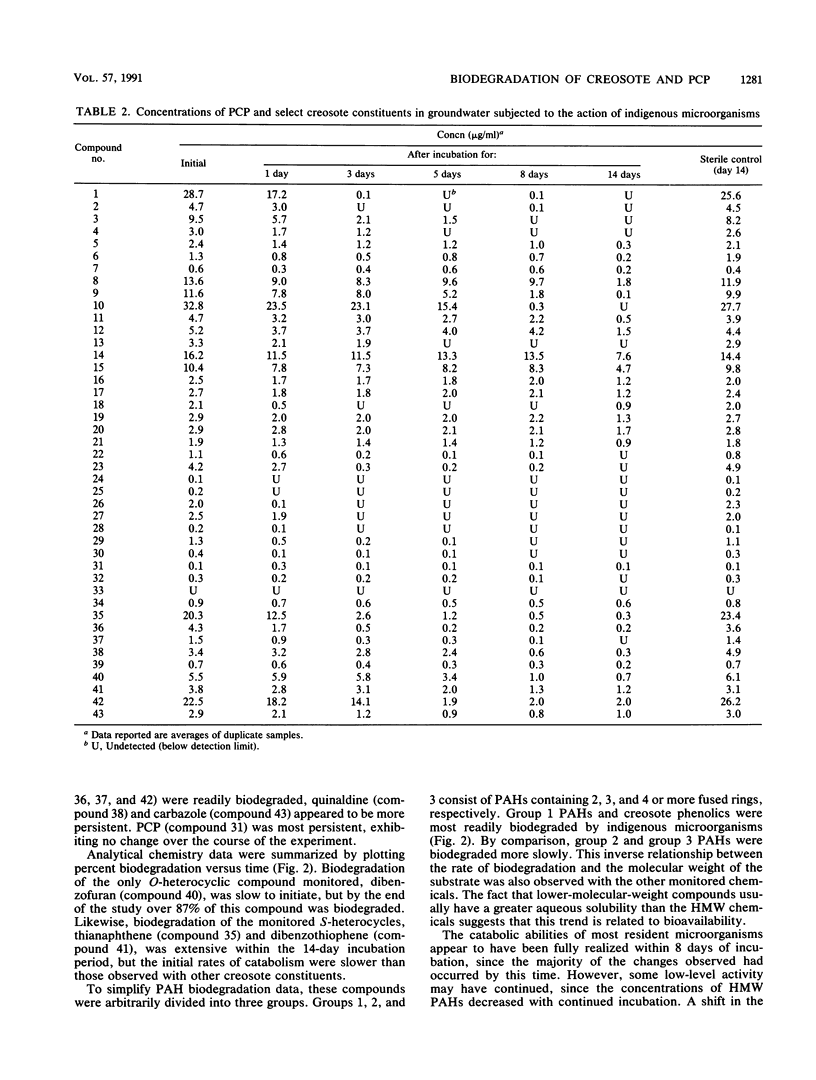
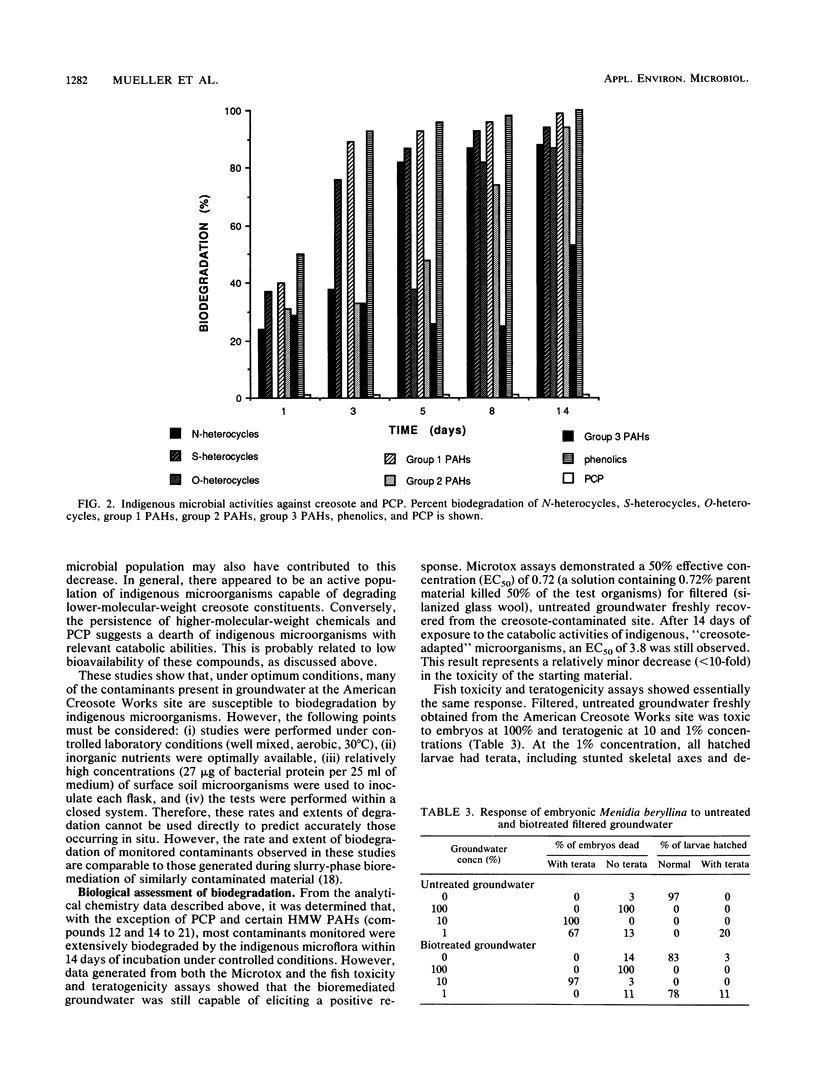
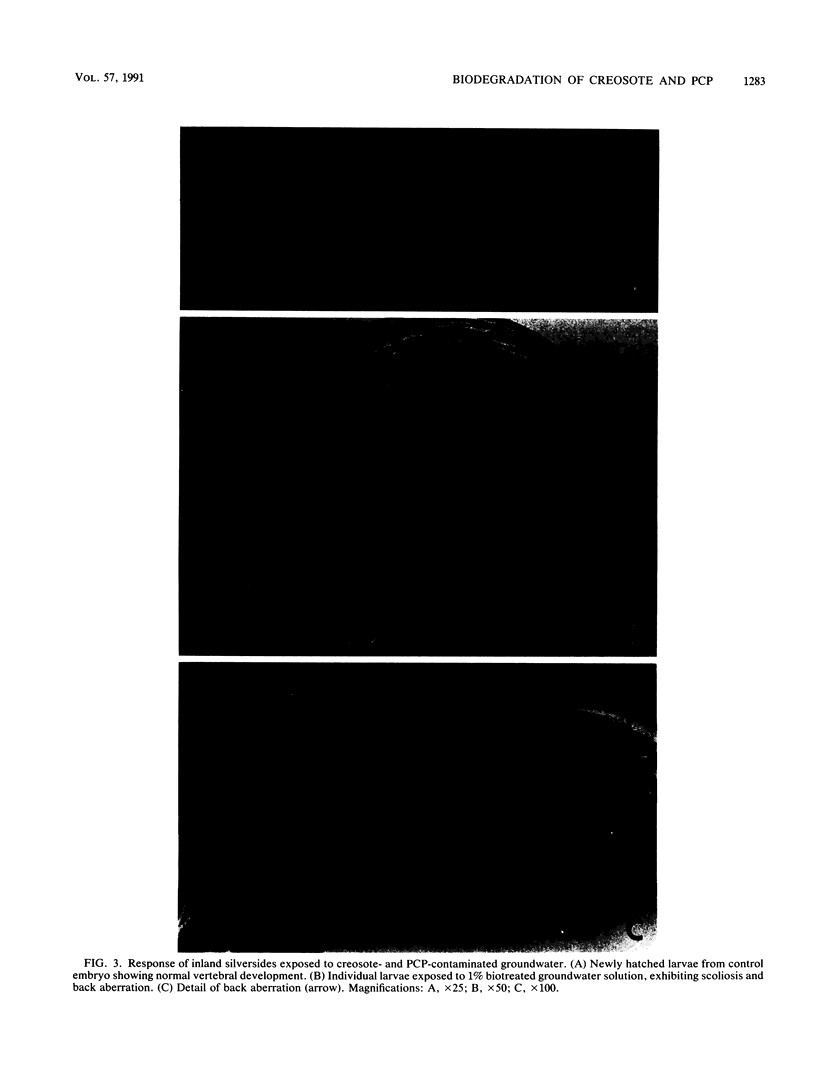
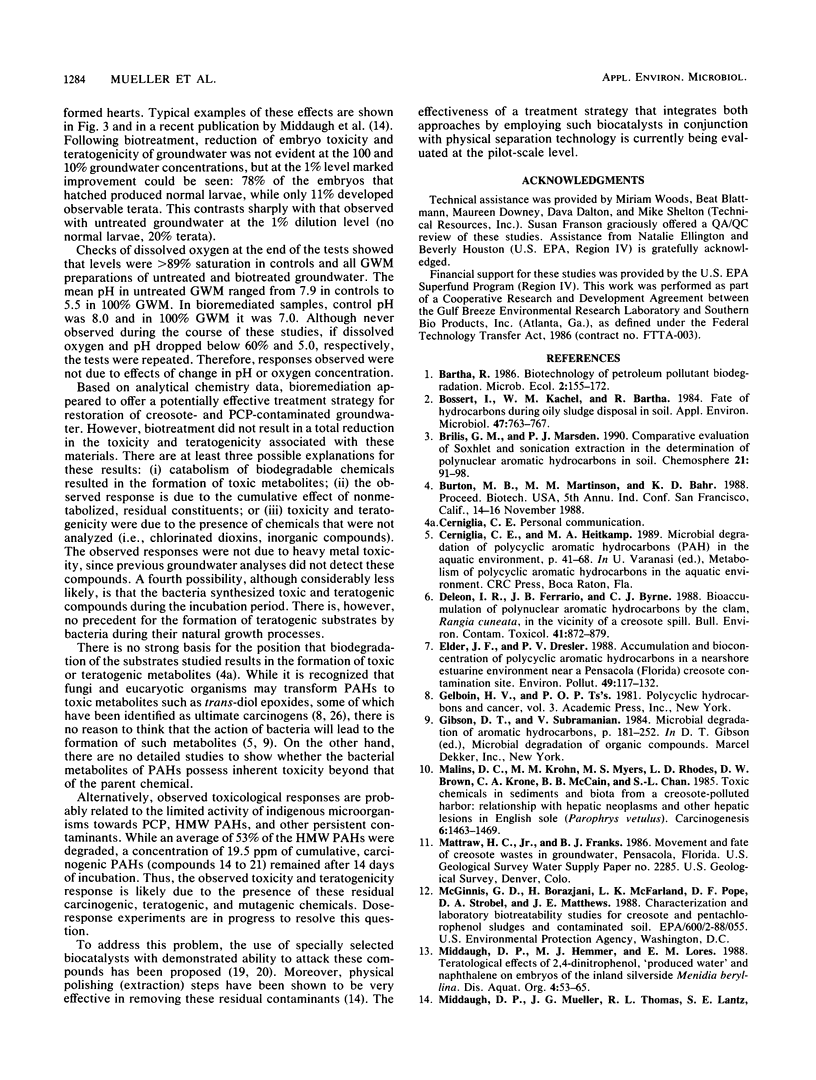
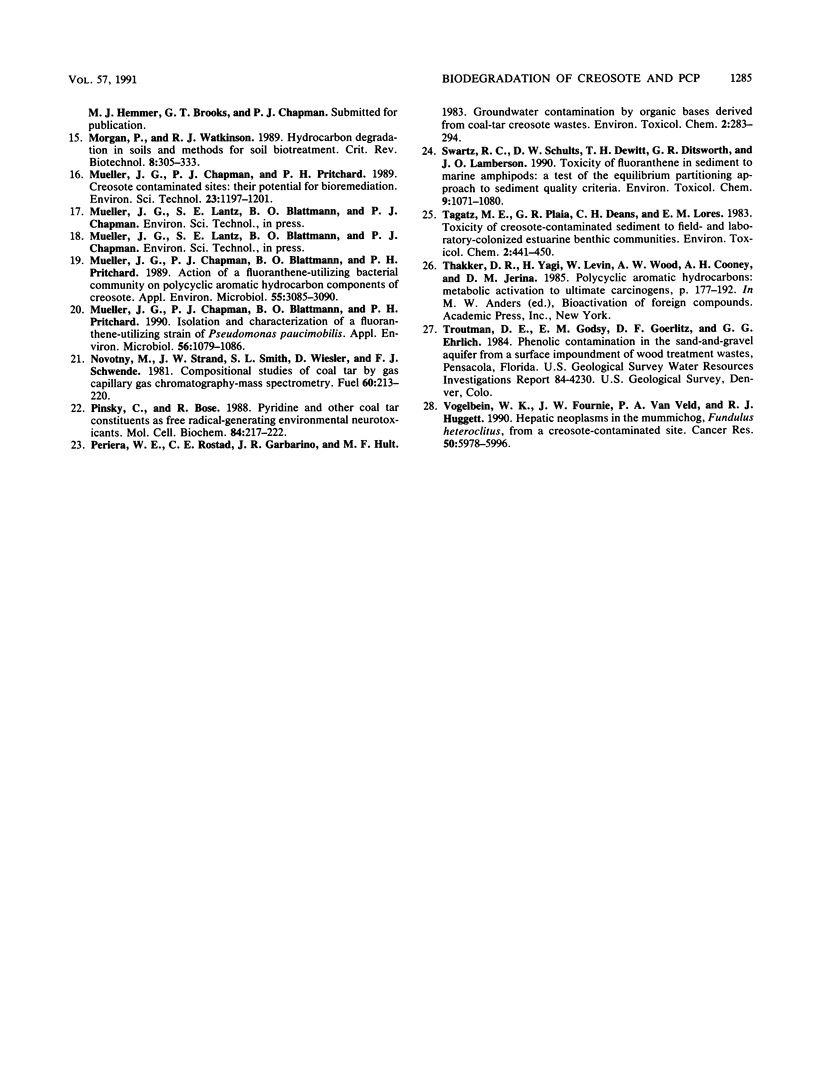
Images in this article
Selected References
These references are in PubMed. This may not be the complete list of references from this article.
- Bossert I., Kachel W. M., Bartha R. Fate of hydrocarbons during oily sludge disposal in soil. Appl Environ Microbiol. 1984 Apr;47(4):763–767. doi: 10.1128/aem.47.4.763-767.1984. [DOI] [PMC free article] [PubMed] [Google Scholar]
- DeLeon I. R., Ferrario J. B., Byrne C. J. Bioaccumulation of polynuclear aromatic hydrocarbons by the clam, Rangia cuneata, in the vicinity of a creosote spill. Bull Environ Contam Toxicol. 1988 Dec;41(6):872–879. doi: 10.1007/BF02021049. [DOI] [PubMed] [Google Scholar]
- Elder J. F., Dresler P. V. Accumulation and bioconcentration of polycyclic aromatic hydrocarbons in a nearshore estuarine environment near a Pensacola (Florida) creosote contamination site. Environ Pollut. 1988;49(2):117–132. doi: 10.1016/0269-7491(88)90244-8. [DOI] [PubMed] [Google Scholar]
- Malins D. C., Krahn M. M., Myers M. S., Rhodes L. D., Brown D. W., Krone C. A., McCain B. B., Chan S. L. Toxic chemicals in sediments and biota from a creosote-polluted harbor: relationships with hepatic neoplasms and other hepatic lesions in English sole (Parophrys vetulus). Carcinogenesis. 1985 Oct;6(10):1463–1469. doi: 10.1093/carcin/6.10.1463. [DOI] [PubMed] [Google Scholar]
- Morgan P., Watkinson R. J. Hydrocarbon degradation in soils and methods for soil biotreatment. Crit Rev Biotechnol. 1989;8(4):305–333. doi: 10.3109/07388558909148196. [DOI] [PubMed] [Google Scholar]
- Mueller J. G., Chapman P. J., Blattmann B. O., Pritchard P. H. Isolation and characterization of a fluoranthene-utilizing strain of Pseudomonas paucimobilis. Appl Environ Microbiol. 1990 Apr;56(4):1079–1086. doi: 10.1128/aem.56.4.1079-1086.1990. [DOI] [PMC free article] [PubMed] [Google Scholar]
- Mueller J. G., Chapman P. J., Pritchard P. H. Action of a fluoranthene-utilizing bacterial community on polycyclic aromatic hydrocarbon components of creosote. Appl Environ Microbiol. 1989 Dec;55(12):3085–3090. doi: 10.1128/aem.55.12.3085-3090.1989. [DOI] [PMC free article] [PubMed] [Google Scholar]
- Pinsky C., Bose R. Pyridine and other coal tar constituents as free radical-generating environmental neurotoxicants. Mol Cell Biochem. 1988 Dec;84(2):217–222. doi: 10.1007/BF00421056. [DOI] [PubMed] [Google Scholar]
- Vogelbein W. K., Fournie J. W., Van Veld P. A., Huggett R. J. Hepatic neoplasms in the mummichog Fundulus heteroclitus from a creosote-contaminated site. Cancer Res. 1990 Sep 15;50(18):5978–5986. [PubMed] [Google Scholar]



